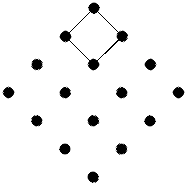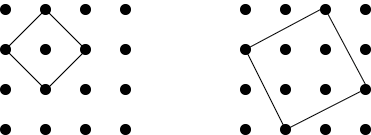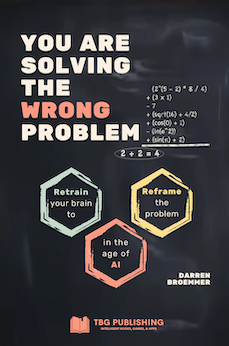
Reframing a Problem Requires a Shift in Perspective
Category: Puzzles
Tags: Problem Solving
Reframing a problem statement is a strategic process. It is not an academic exercise, nor is it solely focused on wording. The important part is a shift in one’s perspective. This shift helps you to uncover new insights and potential solutions. No one said it would be easy though.
Changing perspective is difficult. A popular saying in brainstorming is to think "outside of the box." A new idea or potential solution falls outside of the box if it varies from the conventional way of thinking.
The conventional way of thinking is a creation of our own minds.
Our perspective is one that we created over time. We define the “box” inside of which we think.
It may not be easy to change our perspective, but we can do it. There are Cognitive Biases at work that we will discuss in another article.
The Dot-Grid Puzzle
To illustrate the importance of perspective, we examine a particularly intriguing puzzle. This particular puzzle had me stumped for a while. I couldn’t figure it out. It wasn’t until I accidentally shifted the puzzle book in my hand that everything changed.
The puzzle is as follows. The figure below shows one square drawn within a grid of dots. There are 19 other squares that can be drawn from this grid, allowing for lines to cross through other dots. The challenge of the puzzle is to find the other 19 squares.
How many squares can you find in the grid?

Everyone will easily find the first 14 squares. There are nine 1x1 squares, four 2x2 squares, and one 3x3 square. From here, the puzzle gets trickier. How can six other squares be formed from this grid?
See if you can solve the puzzle using a change of perspective.
If you get stuck, there is a hint below if you scroll down a little further. It will help you take a different perspective on the puzzle.
Scroll down further to see the hint ...
A little bit more ...
Almost there ...
A hint
Note that an important aspect is the first square already drawn. It orients the reader towards a particular perspective. You initially find squares using that lens. Specifically, you find all the squares drawn using straight horizontal and vertical lines.
It isn’t until the perspective is shifted that squares drawn using diagonal lines can be drawn within the grid.
See if the diagram below helps you uncover where the other squares are "hidden."

Scroll down further to see the solution ...
A little bit more ...
Almost there ...
Solution to the Puzzle
This puzzle may have seemed difficult at first, but the solution ended up being fairly simple. Rotate the grid by 45 degrees and the answer seems obvious.
Some additional squares are shown in the figure below. From this, you can deduce the rest of the answer. There are four 1x1 diagonal squares and two 2x2 diagonal squares, for a total of 20 squares.


